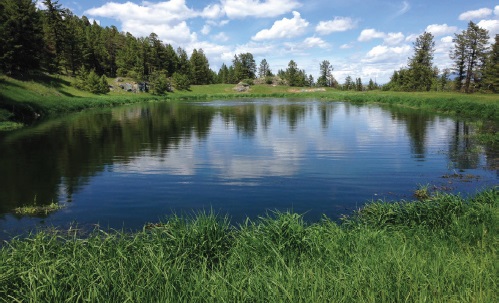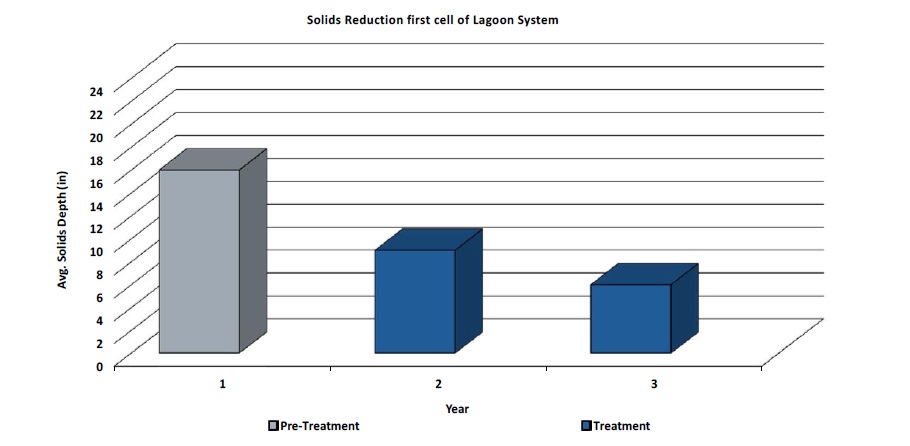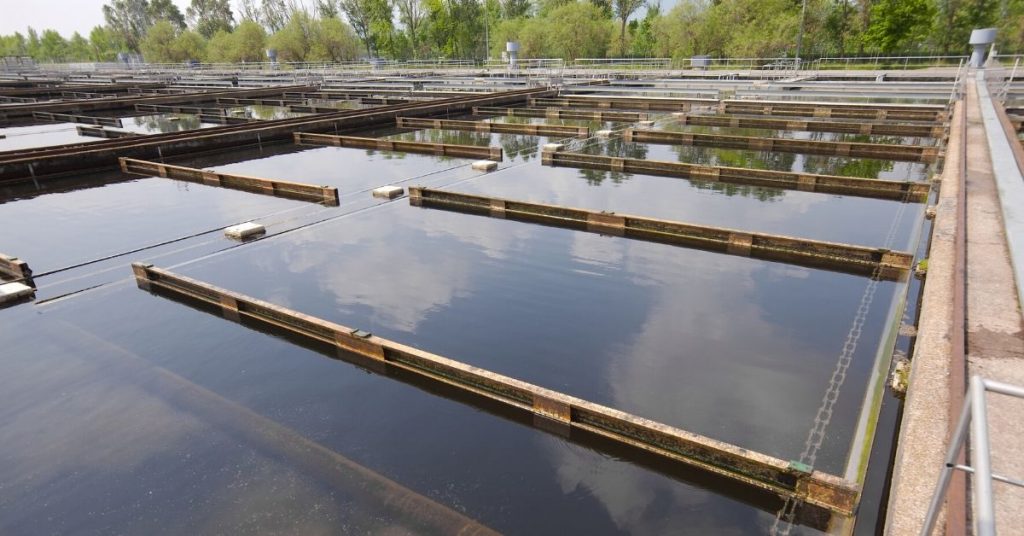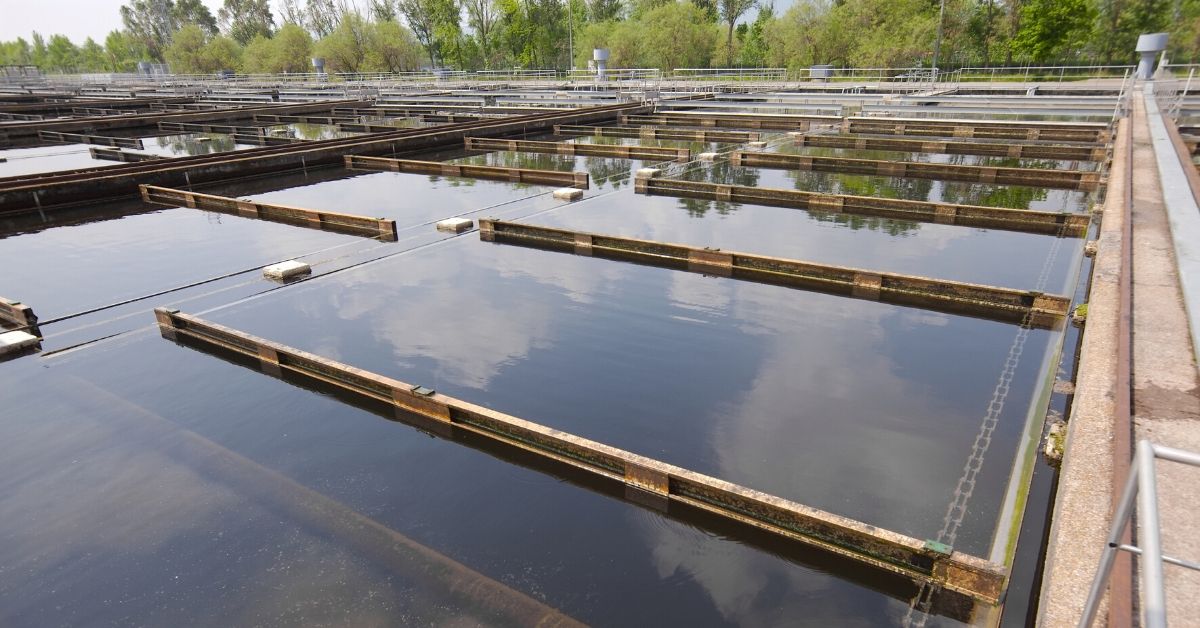Wastewater Lagoon System 0.2 MGD
Municipal wastewater lagoon systems are often challenged with solids accumulation due to high organic loadings. Excess sludge can severely inhibit the treatment process in these systems.
Furthermore, to avoid the high cost and labor requirements of mechanical solids removal, bioaugmentation can be used to reduce sludge buildup. Gerardi’s book,
Wastewater Bioaugmentation and Biostimulation, explains, augmenting wastewater treatment processes wit organotrophic bacterial cultures can increase these populations in wastewater systems to promote more efficient solids degradation.1
The following case study outlines the application of ProBiotic Scrubber® II (PBII) for reducing accumulated solids in a lagoon system.

Figure 1. One of three treatment cells in the case study lagoon system.
A municipal wastewater lagoon system (Figure 1) in Montana was having issues with excess sludge in their treatment ponds. The lagoons processed 0.2 MGD of domestic wastewater. High nutrient and organic loads were continually flowing in from residences and businesses in the town of 1,100 people.
The greatest sludge buildup was occurring in the first treatment cell. For the lagoons to operate properly, the solids required removal. The town wastewater management wanted to biologically decrease the solids in the system to reduce dredging.
In need of bioaugmentation, the lagoon system supervisor contacted BioLynceus®. Daily doses of PBII were applied in the primary lift station ahead of the first cell influent. By implementing PBII, the treatment process was enriched with live cultures of diverse organotrophic wastewater bacteria.

Figure 2. Average solids depth in the first treatment cell the year before treatment and two years during treatment. Solids depths were acquired and averaged from detailed sludge profiles.
After the first year of treatment, the average solids depth decreased from 16 to nine inches (Figure 2). In the second year, the average solids depth decreased from nine to six inches. The average solids reduced in the first year of bioaugmentation was seven inches and the second was three inches.
Since, dredging was not required, the lagoons maintained efficient treatment while using PBII. BioLynceus® bioaugmentation effectively minimized solids in the lagoon system with lower economic and labor requirements than mechanical dredging methods.
BioLynceus® ProBiotic Scrubber® II helps reduce solids in wastewater lagoon systems.
1 Gerardi, M. (2016). Wastewater Bioaugmentation and Biostimulation. Lancaster, Pennsylvania: DEStech Publications, Inc. Pp.117. https://www.amazon.com/Wastewater-Bioaugmentation-Biostimulation-Michael-Gerardi/dp/1932078789



